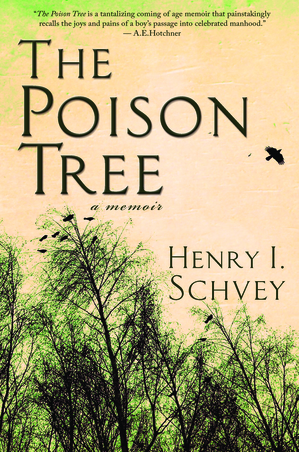Share the post "Women in Comics"
 by Mark W. Tiedemann
by Mark W. Tiedemann
Superhero costumes have always been kind of silly. A few were decided cool, but come on, briefs worn on the outside? I never understood that. But on the other hand, anyone gutsy enough to do that was probably not someone you wanted to mess with.
Maybe that was the point. As symbol, the costume was a lot of things, but one thing stood out—only those capable of not being laughed at could wear one. Or at least capable of not caring. And what kid had that kind of moxy?
But when it comes to the women, evidently a different process is at work as this article by Kelly Thompson can attest.
Way back in my preadolescence, a long time ago, there didn’t seem to be that many women in the ranks of superheroes, at least not in the comics I read. There was Supergirl (Superwoman seems to occupy a more peculiar place in all this), Wonder Woman, Batgirl, and a handful of others I can’t call to mind anymore, not vividly enough to claim that they had any influence. Aside from the amusingly American-esque outfit Wonder Woman wore, I do not recall noticing much in the way of what might be called titillation in any of these. By the time I entered adolescence, Supergirl was looking kind of cute with that miniskirt and go-go boots and the slim torso with what we used to call “perky” breasts, but the only female in any comic I recall feeding into my growing sexual awareness back then was Leeja Clane from the Magnus: Robot Fighter comics. But even she was portrayed more “normally” than what seems to be populating the comics lately.
But a survey of the women now populating the comics, obviously something has changed since my teen-age years.
Or has it?
Per the article linked above, there is a decidedly shallow “take” on what a woman is, drawn more from Victoria Secret catalogs and porn than their male counterparts. Fighting crime and saving the world while looking as seductive as possible, as if to say to the criminal, “wouldn’t you just love some of this? Too bad I have to kick your ass and put you in jail instead.” And exactly how does looking bed-able contribute to the all-important verisimilitude necessary to the suspension of disbelief offered in the space of a 20-page comic?
Superheroes have generally always been unattainable, at least as portrayed from way back in the Golden Age. Lois Lane, despite decades of trying to plausibly pull it off, just can’t really have Superman. These beings are Greek Gods, virtually statues, and for all manner of reasons cannot allow themselves the pleasure of a relationship, if pleasure it would possibly be.
That changed with the Sixties and we all know about Spiderman’s jones for M.J. but these are exceptions. Batman has been seen indulging himself more and more, but for any kind of real relationship to happen his significant other pretty much has to be his equal—so Cat Woman. That makes sense and even to an extent her costume, but as the proliferation of female superheroes has increased we’re finding portrayals of amazonian nymphomaniacs, at least in appearance, dominating the landscape.
It is true that comics have always given us absurd portrayals of the superheroes and their exploits. The poses are stylized in the extreme, the costumes are usually ridiculous. Somehow, though, it seems more egregiously pandering in the case of the women. Why? The most profoundly lopsided portrayal to my eye is She-Hulk, a character that came along well after I stopped reading comics. What is that? What is the justification for her sleek, green-skinned beauty if not to suggest that women can only be strong if they look sexually desirable? That, at base, female strength has to be mitigated by sensuality? That a male can be hugely muscled, menacing, and still an appealing character but women must have this extra buffer to protect our delicate sensibilities?
Or is it nastier than that? Is it that these portrayals are saying to young girls that you should be strong and beautiful but if it comes down to it, you know you can only be one, and it ought to be what we expect you to be?
Coming back to Supergirl and Superwoman, there’s something suggestive in their distinctions. Basically, Supergirl is Superman’s cousin or something. She seemed that way on the page back 50 years ago when I read them. I’ve seen updated versions where the costume keeps getting more revealing or the body within the spandex gets more evident. She’s gone from your cousin to the girl next door to the girl in the office you see every day and wonder about to something from a catalog. But I still see the cousin. They’ve been unable to shift her as much, apparently.
But Superwoman is different, all the way back to the start of her appearances. The most striking thing about her as opposed to Supergirl was the costume. Covered neck to toe. I’ve noticed most of them since have also had full-body costumes. In the earlier age, it seems a part of the adolescent image that cheerleaders could bare their legs and sometimes more, but a WOMAN had to be more circumspect. Supergirl was never intended to be sexualized, but a woman tacitly is sexual.
And maybe that’s it. Because we’re talking about power fantasies here, directed at the adolescent hindbrain where the desire to be invulnerable, indomitable, indestructible competes with, well, reality. Superheroes have always been exaggerations and the costumes are part of the psychology of the type. They must appear as threatening and impervious as they are. Their very form impresses through fear of barely controlled power. With males, it’s the steroid-enhanced musculature. What, to a certain mindset, is the most intimidating—indeed, frightening—aspect of women?
Well, that sexuality that scares the sneakers off most adolescent males. Female sexuality in this case is the counterpart to Ah-nold physiques in the males. In both instances, they are manifestations of the unattainable, both imposing and frightening and—let’s face it—unknowable.
Which is kind of pathetic, especially if that’s what we’re seeing. Because that means these comics are still be written and drawn for adolescent males of a particular sort.
Which is doubly foolish since obviously those sorts are not the only ones reading them. Obviously so given the explosion of backlash to how women are being portrayed.
I’d like to suggest today’s comics creators take a second look at an character who was much more plausibly a strong female—Mrs. Peel from the British Avengers tv show. Yes, yes, she looked good—but when she got down to the business of fighting crime she dressed appropriately.
But that was not the appealing part, at least not for me. What appealed was that she pandered to no one—she was her own person and it showed. Strength from within, unmitigated by some infantile need to see women as “safe” as fantasy objects nor to be feared because of their sexuality. As a role model, she beat out most of the female characters of her day because of that one significant difference.
But that may be part of the problem. Evidently the “model” part has overwhelmed the “role” part. It’s disturbing when really smart people obsessively pay attention to exactly the wrong thing. Better source material and understanding is called for. That and the charge to “Grow Up” would not be such a bad idea.
Check out Mark’s new book – Gravity Box and Other Spaces!



